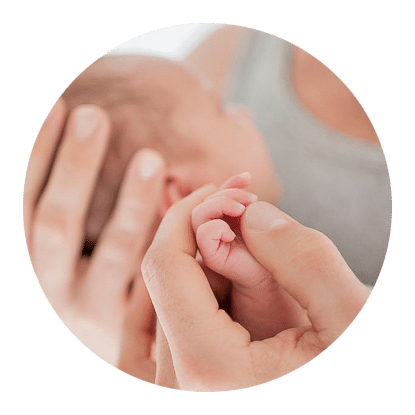Laser Assisted Hatching
Performed by our leading embryologists in the nation, assisted hatching (AHA) has proven to be a successful technique in IVF.
Unlike many other animals, where the embryo grows into a baby inside the egg before it hatches, a human embryo must hatch out of its shell just a few days after fertilization in order to attach and implant in the mother’s uterus. This happens through a chemical reaction in the embryo that softens and thins the embryo’s protective shell – called the Zona Pellucida. In IVF treatment, because the embryo is cultured in a laboratory for the first 5-6 days, hatching often occurs prior to the embryo transfer (where the embryo is placed in the woman’s uterus). To improve the chances that an embryo will attach and implant in the uterus, the embryology lab can use a chemical compound or a laser to dissolve the embryo’s shell and assure that it has the best chance of implanting in the woman’s uterus. This process is known as Assisted Hatching. All hatching at Caperton Fertility Institute currently is performed with our sophisticated and focused laser.
Studies have confirmed that assisted hatching can improve implantation rates – sometimes significantly. It appears to be especially effective in women over 38 and in embryos that have previously been frozen. The zona of the egg in these cases has tendency to be “tougher” and less likely to naturally dissolve at the right time to allow implantation.
Over the past 25 years or so, assisted hatching has been performed by a number of different methods. It was originally performed by manually piercing the zona of the egg with a small pipette (a microscopically thin, hollow glass needle). This technique could be inconsistent in terms of the size of the breach in the zona, which could result in hatching occurring too early, or sometimes not at all. Later, a chemical hatching technique was developed that used an acid called Acid Tyrodes to thin the ZP. As with mechanical hatching, this technique doesn’t always allow for precise thinning of the shell in the optimal spot on the surface. And because some eggs have a thicker, thinner, more brittle, or more elastic shell, the outcome is far less consistent and reliable than desired.
More recently, specialized micro lasers have been developed for assisted hatching. At Caperton Fertility Institute, assisted hatching is performed by our embryology staff in our advanced embryology lab with an extremely sophisticated laser. This cutting-edge (literally!) technology has effectively replaced more antiquated techniques that we believe carry more risk to the embryo and offer lower implantation rates. With the specialized laser in our embryology lab, we can create a precise, nano-scale breach in the zona that is exactly the optimal size and in the optimal location to assure that the embryo hatches at the right time to assure the best chance of embryo implantation.
Some patients express concern that the laser may damage the cells in the embryo and compromise its viability. Having done many thousands of these procedures, we can assure you that they are extremely safe for the embryo. Our embryologists are highly trained and skilled in performing this procedure using this technique with this equipment. In fact, before they can perform assisted hatching on human embryos, they must log many hours of training on this equipment using mouse or hamster embryos.


